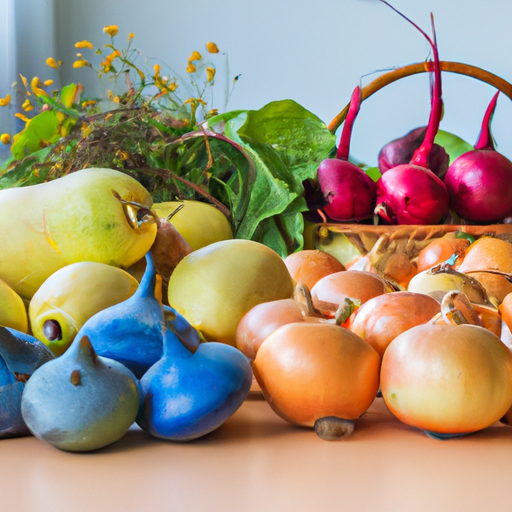Producing Edible Landscapes: Delicious Harvests from Edible Plants
Introduction:
In recent years, there has been a growing trend towards sustainable and self-sufficient living. Many individuals and communities have started to embrace the concept of producing edible landscapes, turning their gardens and outdoor spaces into bountiful sources of delicious harvests. The idea behind edible landscapes is to create a beautiful and functional space that not only pleases the eye but also provides nourishment and sustenance through the cultivation of edible plants. In this article, we will explore the concept of producing edible landscapes, the benefits they offer, and how you can start creating one for yourself.
Benefits of Edible Landscapes:
1. Aesthetic Appeal:
Edible landscapes are not just practical; they are visually pleasing as well. By incorporating a variety of edible plants with different colors, textures, and shapes, you can create a visually stunning garden that rivals traditional ornamental landscapes.
2. Self-Sufficiency:
One of the main advantages of producing an edible landscape is the ability to grow your own food. By planting fruit trees, vegetables, herbs, and other edible plants, you can reduce your reliance on grocery stores while ensuring that you have access to fresh organic produce all year round.
3. Environmental Benefits:
Edible landscapes promote environmental sustainability by reducing the need for long-distance transportation and excessive packaging associated with store-bought produce. Additionally, they provide habitats for beneficial insects like bees and butterflies while promoting biodiversity in your immediate surroundings.
4. Cost Savings:
Growing your own food can lead to significant cost savings over time. By producing an abundance of fruits, vegetables, and herbs in your own backyard, you can save money on grocery bills while enjoying fresh organic produce without any hidden costs.
5. Health Benefits:
By consuming homegrown fruits and vegetables from your own garden, you can be confident about their quality and safety. Edible landscapes eliminate concerns about pesticide residues commonly found in commercially grown produce. Moreover, gardening itself provides physical exercise and stress relief, contributing to overall well-being.
Creating an Edible Landscape:
1. Assess Your Space:
Before embarking on the journey of creating an edible landscape, assess your available space, including factors such as sunlight exposure, soil quality, and water availability. Different plants have varying requirements, and understanding your space will help you select suitable options.
2. Design Considerations:
When designing your edible landscape, consider elements such as companion planting (where certain plants benefit each other), vertical gardening to maximize space utilization, and incorporating perennial plants for long-lasting yields.
3. Choosing Edible Plants:
Select a diverse range of edible plants that suit your climate and personal preferences. Fruit trees like apple, pear, or citrus can provide delicious seasonal harvests while adding beauty to the landscape. Leafy greens such as kale or lettuce can be grown year-round in many regions. Herbs like basil, rosemary, or mint not only enhance the flavor of dishes but also provide ornamental appeal.
4. Growing Techniques:
Become familiar with different growing techniques like container gardening for small spaces or raised beds for improved soil conditions and ease of maintenance. Explore vertical gardening options such as trellises or walls to grow vine crops like tomatoes or cucumbers vertically.
5. Maintenance and Harvesting:
Proper maintenance is crucial for the success of your edible landscape. Regular watering, weeding, and pest management are necessary tasks to ensure healthy plant growth. Be diligent in harvesting your edible crops at their peak ripeness to fully enjoy their flavors and prevent waste.
Conclusion:
Producing edible landscapes is a rewarding endeavor that combines beauty with functionality by transforming outdoor spaces into abundant sources of delicious harvests. By incorporating a diversity of plants suited to your climate and preferences, you can enjoy the benefits of self-sufficiency, environmental sustainability, cost savings, and improved health. With careful planning and maintenance, your edible landscape will not only nourish your body but also provide a feast for the eyes. So, why not start transforming your garden into a bountiful paradise of edible delights?













